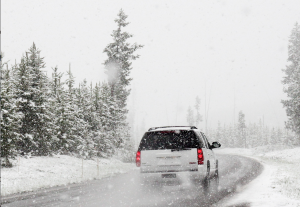The big freeze: tips for safe winter driving
Travel in winter is wonderful, but if you’re heading to the snow and your trip involves driving in icy or snowy conditions you need to take extra care. Here are our top tips for driving in challenging wintry conditions, provided with assistance from New Zealand ski tourism, and how to stay safe.
Your vehicle
A 4WD is often preferable, but remember that it won’t magically make you a better driver or impervious to the winter conditions. A 4WD will not provide any braking advantages over a 2WD, however engine braking can be more effective when driving back down the mountain.
Your vehicle choice should take into consideration the gear you are carrying. Skis and snowboards can be very difficult in a smaller car and a larger vehicle will usually have a larger tyre foot print which is going to do a better job of keeping you sticking to the road.
Driving in snowy or icy conditions
Check the Snow Report or local weather report so you know what the roads have in store for you. Make an informed decision about your mode of travel.
Always assume that there is ice on the road even when you can’t see it. Black ice is especially common in the mornings, on and under bridges or overpasses, in shade and in the evening.
To avoid losing traction or sliding on slippery roads, you must always drive in a smooth manner and avoid any sudden movement of the steering wheel, rapid acceleration or hard braking. A good mental exercise is to imagine you are driving with an open cup of coffee on your lap and you are trying to not spill a drop. By the way, don’t drive with an open cup of coffee in your lap!
All of your vehicle’s control is reliant on four tyre footprints that are not much bigger than your hand. If you go beyond your tyres’ capability at any point, you will skid. Aim to be doing only one of the following at any one time – accelerating, steering or braking. Slow down before getting to the corners and accelerate only once the turn is complete.
When you are driving back down the mountain, make sure you do not ride your brakes for long periods of time. Doing this can cause you to lose your brakes entirely. Instead, you should use your gears to help control your speed and pulse your brakes intermittently.
If at any point you think you are out of your depth, pull over in a safe place in an area of good visibility and wait for assistance.
If you have a long drive home as you leave the mountain, share the driving duties and take your time.
Rental vehicles
If you are renting a car, tell the rental company that you plan to drive to the skifields and make sure they are able to provide snowchains (common in New Zealand, less so in Australia). Ideally get a car rental staff member to show you how to fit the actual chains that come with the vehicle. This will not only ensure that the chains are in the car and are in working order, but you will also have the peace of mind that they actually fit.
Snow chains
Chains should always be carried when driving on alpine roads regardless of the conditions. An easy drive up in the morning can turn into a tough ride home after a midday snowfall.
Practice fitting the chains yourself before hitting the road. Help will often be on hand, but being able to fit your own chains might be the difference between fresh powder and missing out. You will also be very unlikely to enjoy learning how to put chains on in a blizzard!
Make sure they are in an accessible place that won’t require you to empty your entire car onto the side of the road to get at them.
Obey the signage and mountain staff regarding chain fitting. The guys and girls on the hill know exactly where the safest places are to fit your chains.
After you’ve fitted your snowchains, drive slowly for at least 100 metres and pull over in a safe spot to tighten them once they have shifted into place.
Once your chains are no longer required, take them off where directed and put them away neatly so there are no tangles next time.







